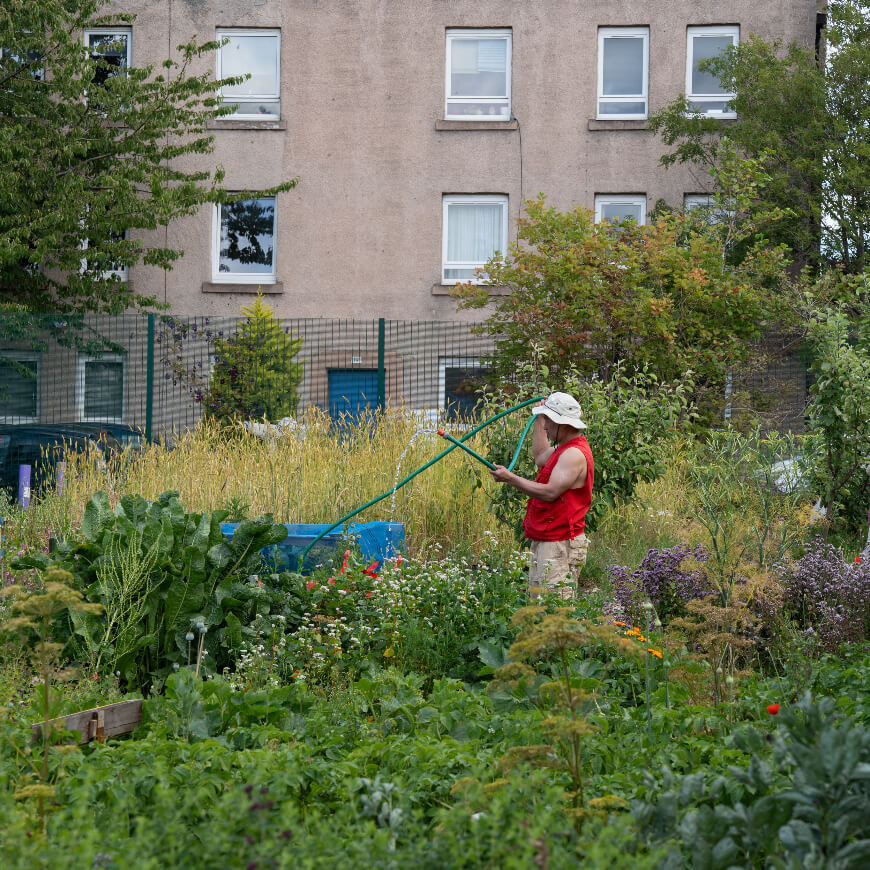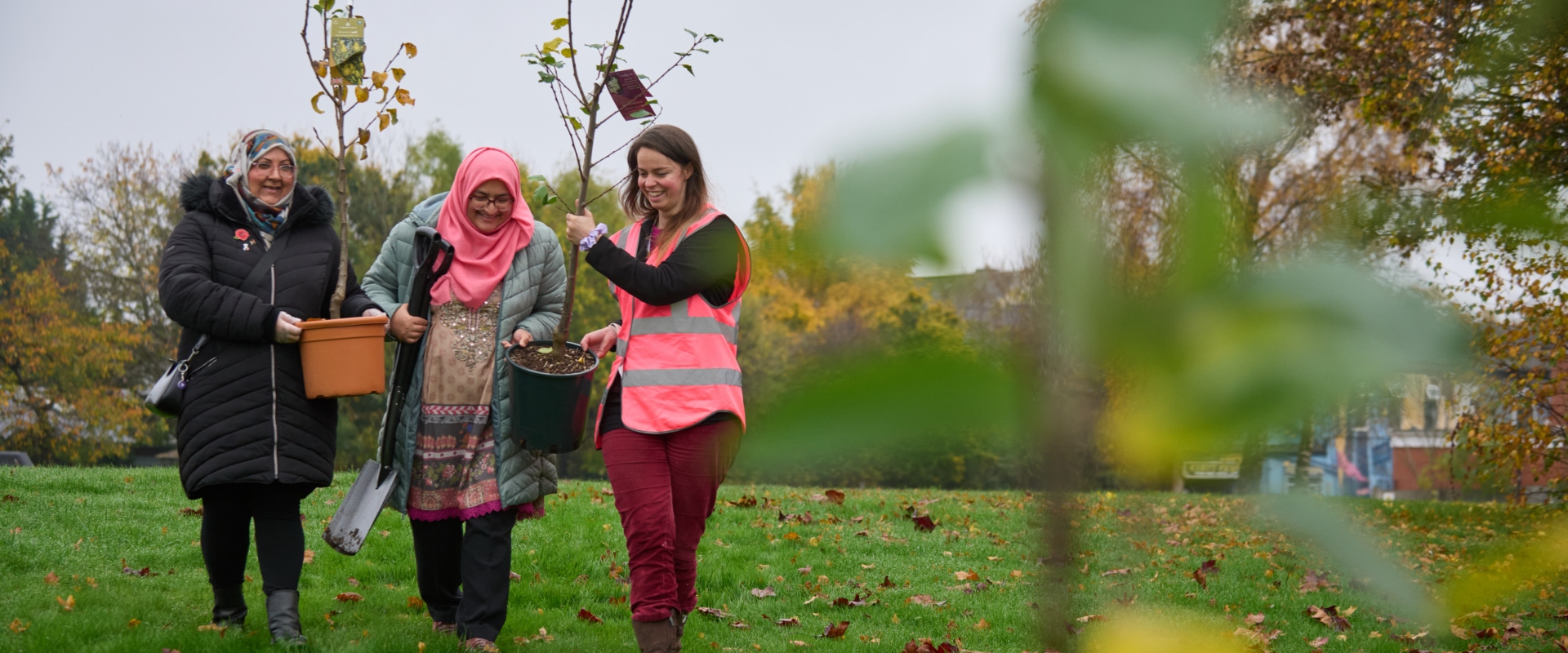
Community tree stewardship guide
21-10-2025
Get started with...
Case study
Guidance

21-10-2025
Get started with...
Case study
Guidance
Community tree stewardship is the idea that local residents can come together to plan, plant and care for trees in urban neighbourhoods.
Research in a report from the Woodland Trust shows that most people living in towns and cities believe that trees make their streets a better place to live. They bring lots of benefits including:
• Connection to nature on city doorsteps
• Better air quality and reduced flooding
• More urban homes for wildlife
The same report shows a significant proportion of people are keen to help look after trees too. Voluntary stewardship schemes are a simple way to capture this enthusiasm, giving residents a sense of ownership over their patch of urban forest and more neighbours the chance to enjoy the benefits that these green giants bring.
Read on to hear how a small charity in Lewisham is building a community of urban forest champions, making the borough greener and more liveable one tree at a time.
Street Trees for Living is a Lewisham-based charity dedicated to bringing people closer to nature and trees closer to people.
They work with local residents, schools and community groups to plant street trees in their local neighbourhoods. From planning to planting and longer-term care, watch this video to hear how their approach to voluntary tree stewardship is benefiting people and nature right on their doorsteps.
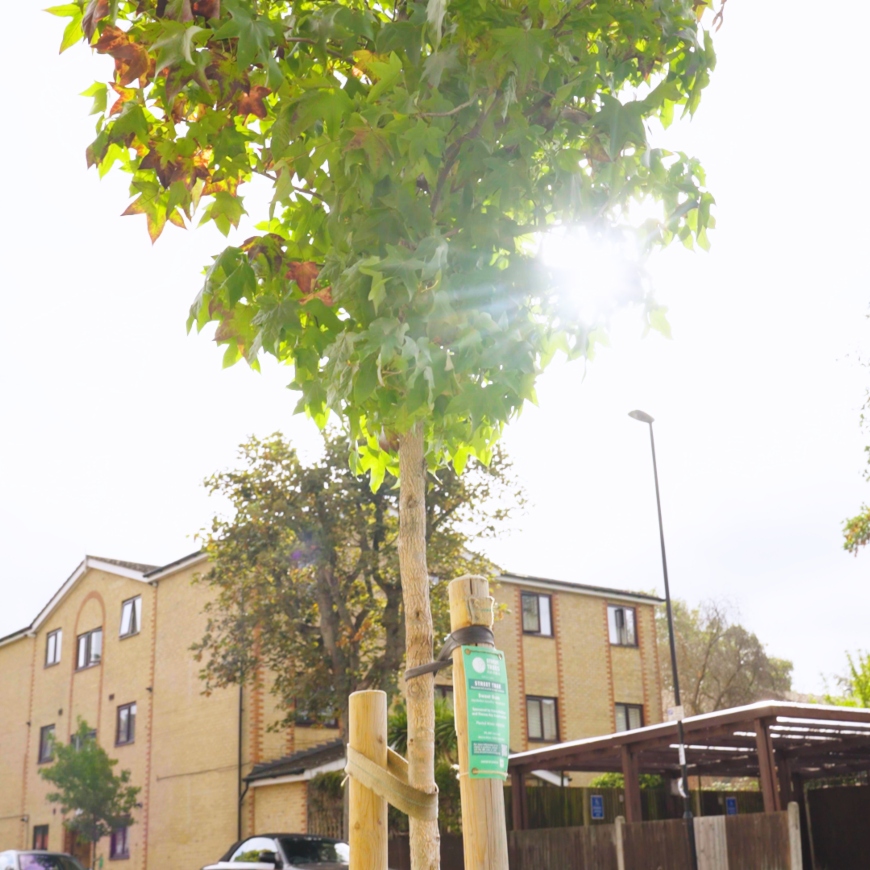
©National Trust Images / Jungle
Street Trees for Living brings together local people who share a passion for growing greener neighbourhoods.
They started with one street and have grown their knowledge and reach from there. And you can too. Here’s their guide to bring community-led tree stewardship to your own doorstep.
Understand your local community’s wants and needs by having conversations with people in your neighbourhood:
We found that establishing new relationships and networks helps you identify who else is active in your community, and where there’s energy and momentum:
Start by understanding where your personal vision overlaps with the community vision for your neighbourhood to find the common ground. It could be more shade, a greener canopy or homes for wildlife.
Now you can determine some clear goals and objectives. Begin at a hyperlocal level with one neighbourhood or a small collaborative project (e.g. planting a handful of trees).
Your objectives should focus on delivering what people want from trees and be for the benefit of all. Whether that’s improving air quality, shading and cooling or beautifying an area, tree stewardship can help build social connections, increase people’s physical and mental wellbeing, and encourage skill sharing.
It’s important to have a good working relationship with your local authority. In our experience it helps to start by getting to know who they are, how they work and what you can offer them:
The partnership between you and your local authority can be mutually beneficial for everyone involved. Our relationship with Lewisham Council is unique and it’s a solid relationship that has been nurtured over many years, building trust and influence on both sides.
Here are some real-life examples:
How we benefit
Our local authority takes care of procurement and management, including ordering the trees, holding the contracts with suppliers and contractors, managing the health and safety and risk management, storing the trees on their site before planting and allocating a portion of their annual tree budget towards this initiative. They can also consider the work in context of the long-term plan for the street and area, such as new building developments, utilities works and changes to traffic measures.
How our local authority benefits
In return, we save our local authority money by providing in-kind services that they would otherwise have to contract out. Our volunteers are involved in the whole process, from engagement and consultation (including scanning sites ahead of planting to help determine suitable locations) to citizen science initiatives (where local people annually audit trees and record valuable information) to regular maintenance (including weekly watering, formative pruning and tree health checks). As well as saving the council money, this level of attention to detail ensures that over 95% of the trees we plant survive.
We fundraise for the council too, bringing in millions of pounds toward planting trees on local authority land and ensuring their survival.
We also provide resources by acting as a ‘community forester’; a role that connects the public to the council and helps communication flow between the two. We are a very public facing organisation with a good reputation that prides itself on responding quickly to residents and developing its planting programmes based on residential feedback, helping to harbour good feeling between the public and their local authority.
We offer all sorts of volunteering roles that can be tailored to suit people with different skills, interests and available time. From ad hoc roles like summer watering to ongoing roles like Area Reps who work with residents and local groups to organise new planting.
First, think about what to say to attract volunteers:
Next, think about where to say it:
Our volunteers are happier and stay with us longer when we prioritise their wellbeing and development. Many of our Tree Care volunteers and Area Reps have been regularly contributing their time for years now, and they are fundamental to our success.
Think about giving back – offer training and education opportunities, networking, qualifications, food and drink, expenses, skills development and social events.
Think about showing value – design a visual chart to show how everyone’s roles fit together and how their contribution is making a positive impact to your goals.
Think about regular support – meet face-to-face to make sure you’re both happy with how the role is going, what’s expected and the level of commitment.
Think about being flexible – let people develop the role in their own way and feel a sense of empowerment and autonomy.
Think about sharing knowledge – we offer peer-to-peer learning and expert training from our tree care consultant to share knowledge and skills.
Think about personal investment – upskill and train local people to ensure your volunteer sessions are as accessible and inclusive as possible.
Whether you’re talking with volunteers, residents, community groups or your local authority, make sure you always communicate in a way that’s clear and inclusive so everyone involved knows what’s going on.
Good communication is also about being caring and engaged, listening and acting on queries quickly and being generous with the tools and support you share with people.
Here are some of the different ways we communicate:
The more tailored your funding applications are, the better. Look for grants that will fund community stewardship and tell a succinct story about the particular benefits you can offer.
Other things to think about:
Once your project is up and running, continue talking to local people about their ideas and concerns. This enables you to develop and refine your activities as you go. And to ensure you’re growing in the direction you all want to go, you can keep monitoring and assessing using creative evaluation tools like face-to-face conversations and interviews, group discussions, case studies and testimonials as well as capturing photos, videos and surveys.
Remember to share your results to show how you’re making a difference, keep sharing your message widely and be open about your successes and challenges.
Community-led action is essential for a thriving, biodiverse urban forest. From watering street trees to neighbourhood planting, here are a selection of tools to help people get involved in local urban tree initiatives or start a new project.
Discover more inspiring stories, practical tools and activity templates from the University of Exeter and the National Trust. There are ideas for different models of community forestry, principles of best practice and participatory session plans. A report offers recommendations for how grassroots initiatives can work with larger organisations to create a thriving, biodiverse urban forest together too. Published as part of RENEW, a project funded by the Natural Environment Research Council (NERC).
Explore the resources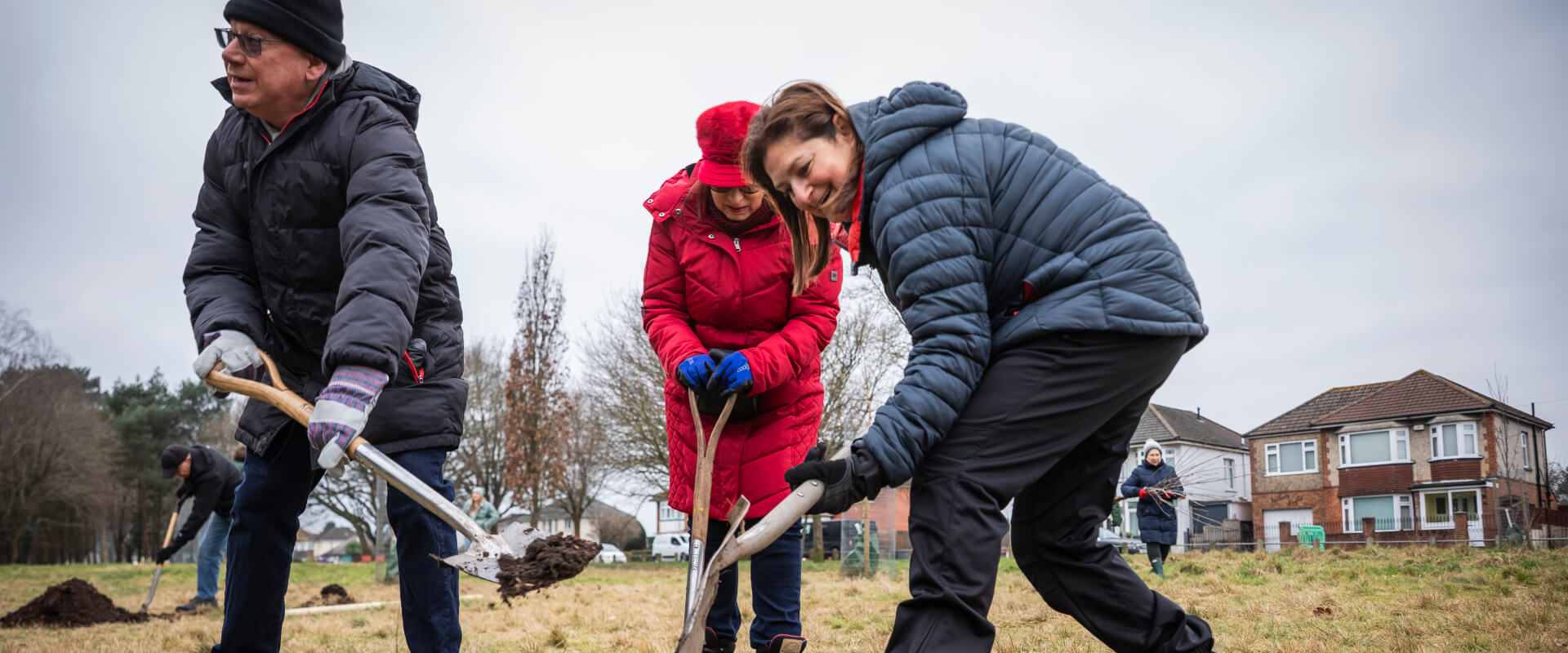
This guide is for community groups who want to improve access to the benefits of trees in their area. It has key actions to plan a community tree planting initiative, ways to engage people and practical advice for planting and long-term care. The guide is licensed under CC BY 4.0.
Read the four-step guide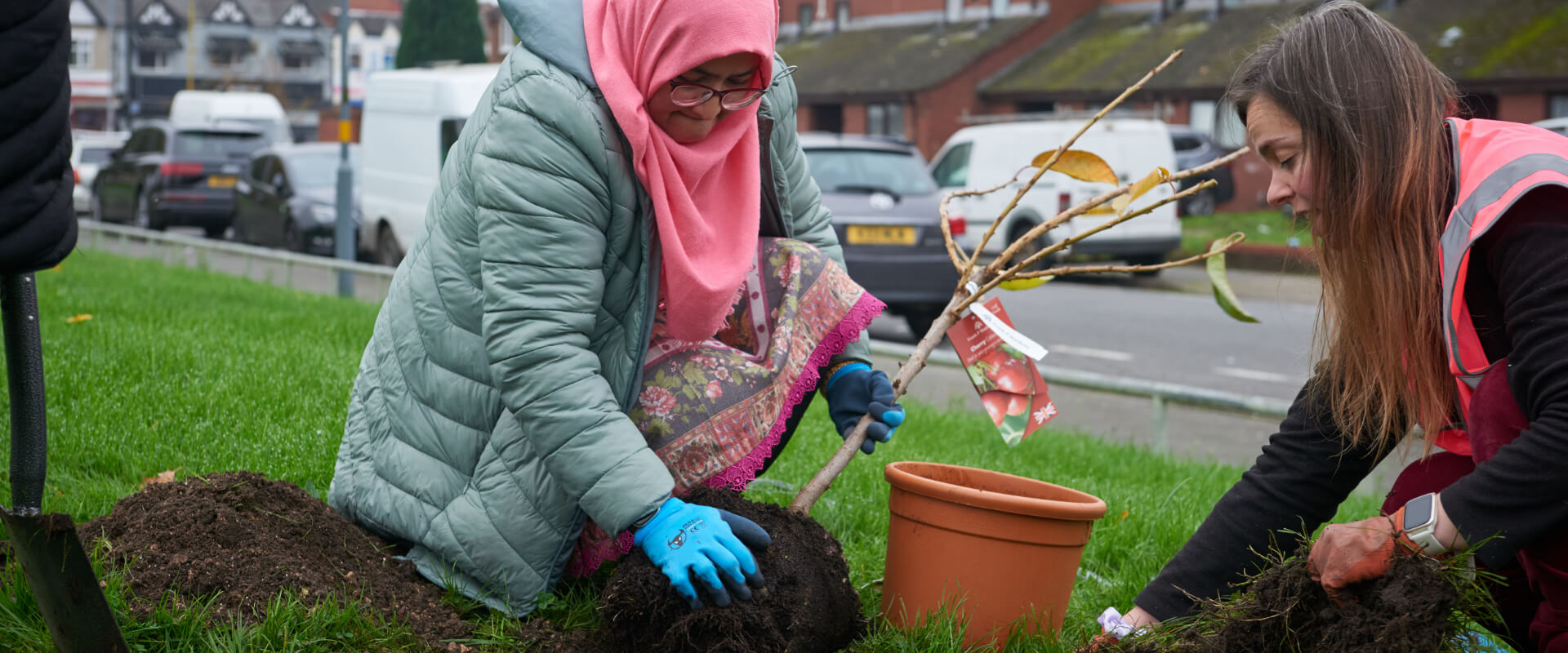
More and more community groups are becoming involved in the planting of larger trees in public open spaces. This guide from the Trees & Design Action Group outlines the planting process with a simple step-by-step approach. The guide is licensed under CC BY 4.0.
Take a look at the guide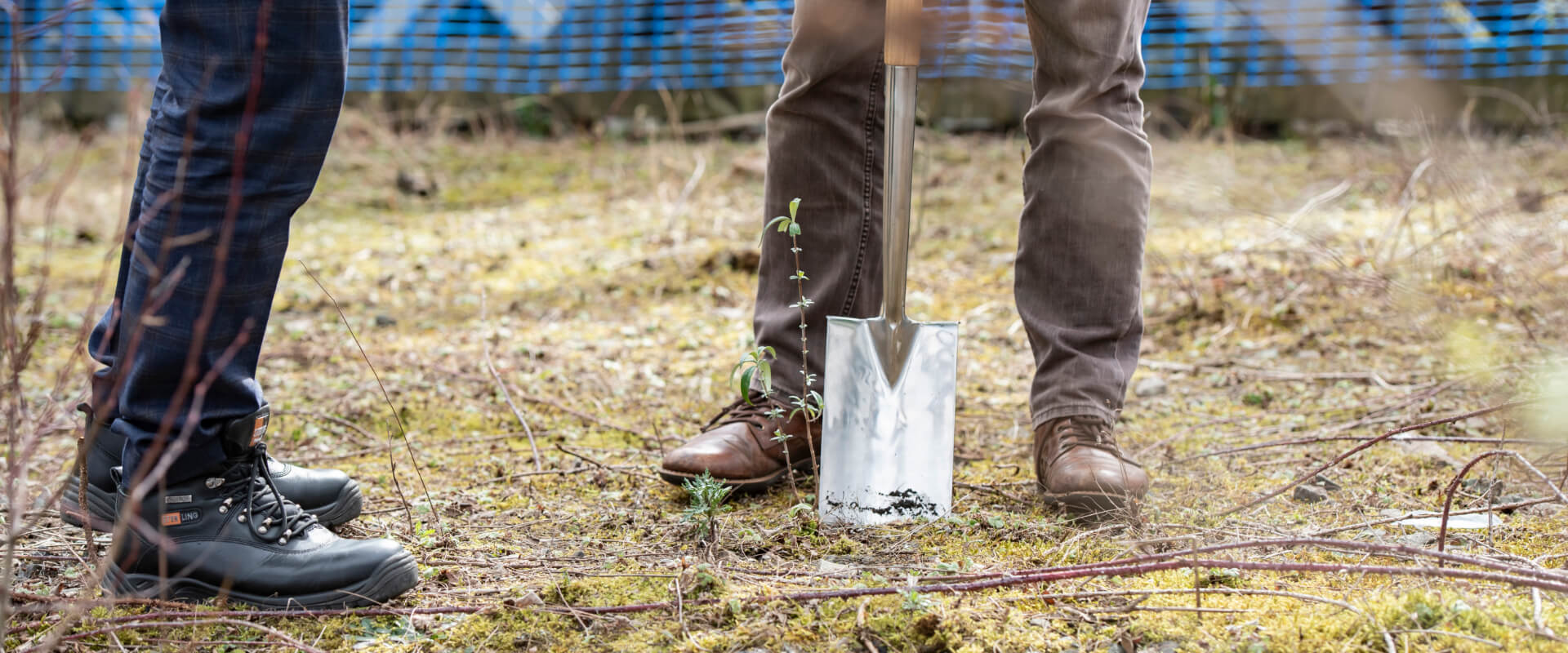
The Tree Planting Calculator is a simple tool to convert tree canopy cover goals into tree planting numbers at a neighbourhood level to help to improve tree equity. It was developed for the Woodland Trust by Treeconomics.
Use the tool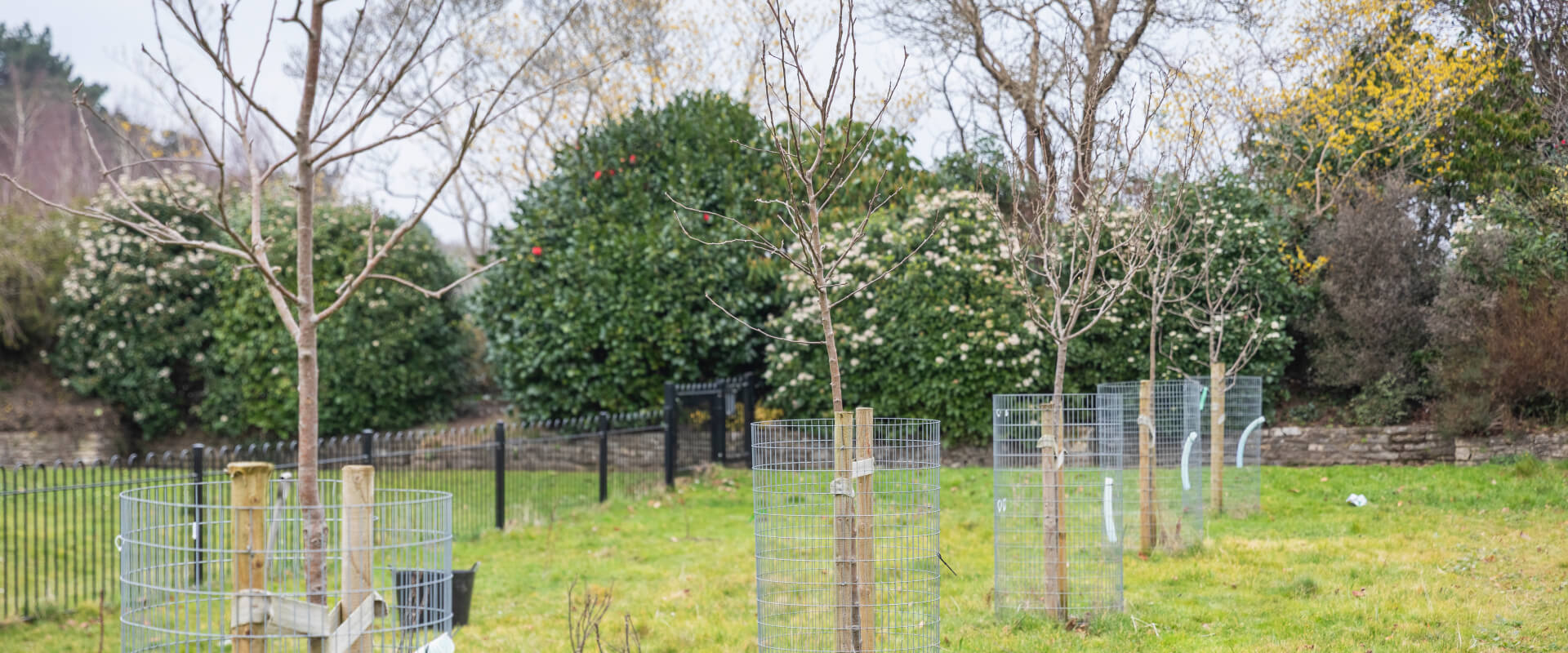
From community forests to urban orchards and ancient tree guardians, there are many different ways to take an active role in your urban forest.
Here are some of the organisations planting and caring for trees, organised by country and region. There may be opportunities to support your local group, or simply connect to share learnings and ideas.
Get free inspiration, ideas and advice for organising a community project or starting your own group.
The Wildlife Trusts Community Hub has simple, easy-to-understand guides that tell you how to find funding and run a group, plus everything you need to know about insurance, banks, health and safety and more. The hub was made possible thanks to The National Lottery Heritage Fund.
